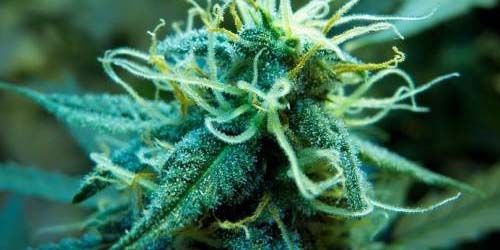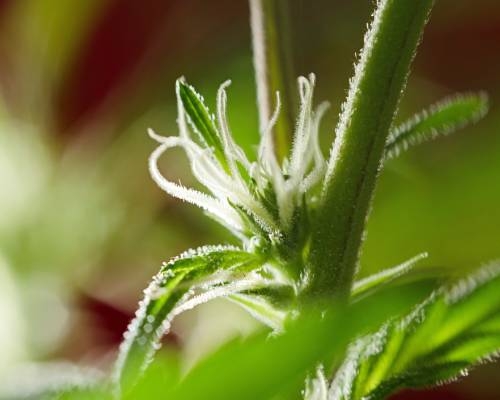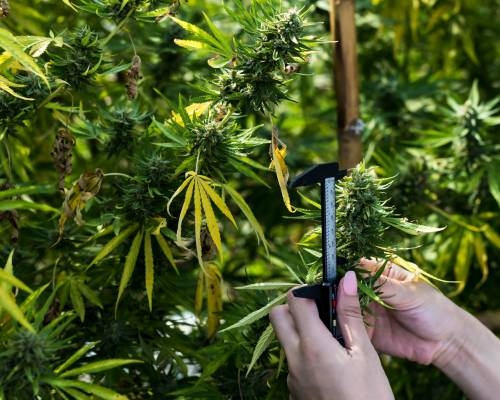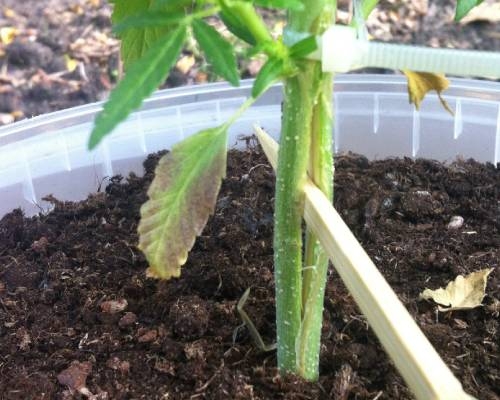
There is nothing more beautiful than a female weed plant in bloom. It makes your mouth water when you see the buds growing. Want to monitor this phase of growing in the best way possible? Use these 7 tips for your weed plant in the flowering phase.
Is your plant not flowering yet? Then check out our 5 tips for your weed plant's growth phase first.
When will my Female Weed Plant Bloom?
Before we give you tips for the flowering phase of your female cannabis plant, it is important to know when she will enter that phase. Naturally, a weed plant starts flowering when it is left in darkness for more than 10 hours a day. In indoor and outdoor growing, this happens at different times.
- When growing indoors you control the moment your weed plant starts flowering. If you adjust the light schedule so that the plant is deprived of light for more than 10 hours a day, it will transition to the flowering phase. For example, a popular light schedule is 12 hours of light and 12 hours of darkness.
- If you are growing outdoors, your female weed plant will start flowering around the last week of August on average. That's when the nights are long enough. However, there are strains that will flower a little earlier or later because they are more sensitive to the change in light hours.
- Autoflower weed plants are an exception to this rule. Autoflowers have the ability, after several weeks of growth, to automatically transition to the flowering phase. They don't need a change in the amount of light hours for that. So: whether you grow indoors or outdoors, after about 2 weeks of growth, your weed plant will enter the flowering phase.
You can tell a weed plant is flowering when you see flowering hairs or pistils forming. These are white hairs half to a full centimeter in size. They develop in the axils of the cannabis plant. This is where the side branches and larger branches come together. In these places you will eventually see the buds appear.
Bloom Earlier? Blackout!
Want your female weed plant to start flowering earlier? Indoors, that's up to you and you can adjust the light schedule whenever you want. There is also a trick for this outdoors: darkening. It costs you a lot of time and effort, but it can ensure that you finish growing much earlier in the year.

Flowering hairs / pistils.
Tips for flowering your weed plant
#1 The Growth Spurt
Is your plant a little smaller than expected at the end of the growth phase? Watch out! During the transition phase from the growing to the flowering phase, your female weed plant may experience a growth spurt. This is also known as the stretch phase (not to be confused with strechting during the seedling phase). In some cases, your plant can grow up to twice as big. Keep that in mind. Especially if you're working in a grow room with limited space.
#2 LST & Scrogging
During the growth spurt described above your female weed plant will grow mostly in height. If you prefer the plant to grow in width, you can use two growing techniques: LST (Low Stress Training) and ScrOG (Screen of Green).
With LST, you gently bend the branches of your plant to the side (without snapping), then secure them with tie wire. In the ScrOG method, you hang a net with compartments horizontally above the plant. Any twig that grows through the scrog net you pull back and let it grow horizontally under the net. Both techniques have the advantage that your plant grows more in width than in height. You utilize the growing space better and the horizontal foliage captures much more light. You end up increasing the yield of your weed plant.
Attention! Low Stress Training and scrogging are often applied during the growth phase. More importantly, you can only keep doing it during the first few weeks of the flowering phase (2 to 3 weeks). After this period, the growth spurt is finished, the branches become too strong and you can damage the plant. So start LST and ScrOG methods early to enjoy the benefits.
#3 Light, Temperature & Water
The basics of growing weed. These also change when your female weed plant is flowering. We already briefly mentioned light. Your plant needs at least 10 hours of darkness to transition to the flowering phase (autoflowers excluded). This means that you can still make a lot of adjustments to your light schedule. For example, there are growers who run their lights for 24 hours or turn them off for 18 hours.
In the growing phase, plants flourish at higher temperatures than in the flowering phase. Whereas a growing weed plant prefers to see 20 °C to 29 °C on the thermometer, for a flowering weed plant it is about 18 °C to 27 °C. Although it is often warmer outdoors during the plant's flowering phase, the plant can't take it as well. If temperatures are too high, you are more likely to have leaf problems and diseases. So try to keep the temperature at the right level.
In terms of watering, things also change during the grow. In the flowering phase your plant is bigger and consumes more water. Also, when temperatures get high in the summer months, the need is greater and the soil dries out faster. So you will need to water not only more, but more often.

Can you see the buds growing?
#4 Bloom Nutrition, Stimulators & Boosters
An obvious tip, but not less important. Use the right plant nutrition during the flowering phase to increase the performance of your female weed plant. Dutch-Headshop has gathered all the nutrition, stimulators and boosters you can give during the flowering phase on one page. A few tips:
- Use bloom nutrition instead of growth nutrition, but ensure a smooth transition. Don't stop using growth nutrition immediately once your plant has given the first signs of the flowering phase. Give the highest amount of growth nutrition in the first weeks of the flowering phase together with flowering nutrition. Look carefully at the instructions for use!
- Add a bloom stimulator or booster to your growing schedule. Not every stimulator is the same. Some can provide increased bud production, while others focus mainly on improving flavor. On the product pages in our webshop you can read what you can use each booster or stimulator for.
- Too little nutrient will reduce the potency of the weed plant, but too much is not good either. Watch out for nutrient overload. You can recognize a deficiency or overdose by the appearance of the leaves. Crazy color or shape? Investigate what it is and handle it!
#5 Thieving
A large weed plant seems to have only advantages, but it doesn't. When you've grown a giant plant, the lower part may not get any light. The upper part of your weed plant catches all the light, leaving the lower leaves and buds in darkness. That's a shame! In that case, you can make the weed plant thinner. In doing so, you prune the bottom of the weed plant. The result is that the parts that remain can grow and bloom faster. The energy that your weed plant would normally put into the lower branches will now continue upwards. Make sure you know what you're doing, though. Determining the right moment is essential when thieving weed plants.
#6 Cleaving
The most controversial tip from this list: cleave your weed plant. This is a trick you apply just before harvest to increase THC production. You do this by splitting the stem at the very bottom of the plant. This disrupts the nutrient flow and puts excessive stress on the plant. To prevent the plant from drying out, it would accelerate resin production and thus the production of cannabinoids like THC. Not every grower is as enthusiastic about weed cleaving. It is said to be risky because you can destroy the weed plant and, in addition, you are more likely to get diseases and pests due to the open wound on the stem.

#7 Flushing before Harvest
The last but perhaps most important tip is flushing. Don't think of this as putting a plant spray on your weed plants. No, by flushing you ensure that all the nutrients left in your weed plant and its soil are used. You can do it by just watering the last 10 days of the grow, without plant nutrition. This not only saves you plant nutrition for your next grow. The effect and taste of your weed can be affected by the nutrients. The quality of your weed will deteriorate if you don't do it. So flush!
Prevent problems during flowering
In addition to these tips, we want to urge you to keep an extra eye out for problems such as diseases, fungi and pests. During the bloom phase conditions are very tricky. Heat, humidity and other elements encourage bugs and diseases. Our master tip: Look closely at your plant every day. Also between the branches and under the leaves. See something peculiar? Investigate what it is with the help of the blogs below and take action. Can't figure it out? Let Dutch-Headshop help you.
- Leaf problems with cannabis plants Part 3: Life-threatening diseases
- Stop & Prevent Cannabis Bud Rot
- Combating Spider Mites on Cannabis Plants
- Mildew on Weed? Fight back if you See it!
When to Harvest Flowering Plant
Has your female weed plant finished flowering? Then it's time to harvest the weed. But when do you know the time is right? Fortunately, we have written a blog about the right harvest time for cannabis plants. To sum up: to determine the right time, look at the trichomes on the weed with a microscope. When these are all cloudy and some are starting to turn brown, your plant is ready for harvest.
There are growers who only look at the flowering hairs on the weed plant. When about 80% are brown, the plant can be harvested.
Want to improve the taste of your weed? In our blog we give 8 tips that you can easily do that while growing!